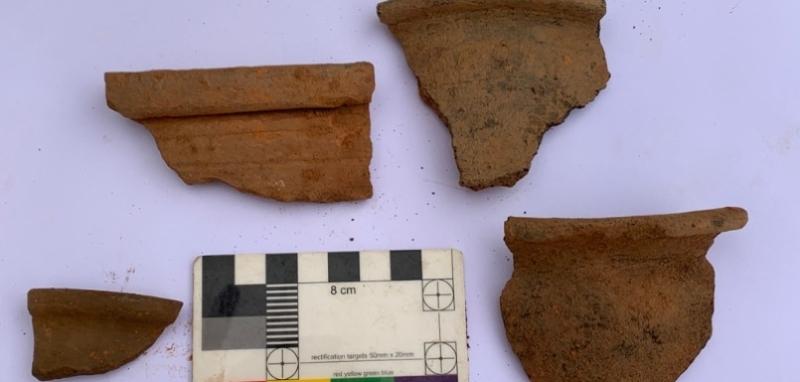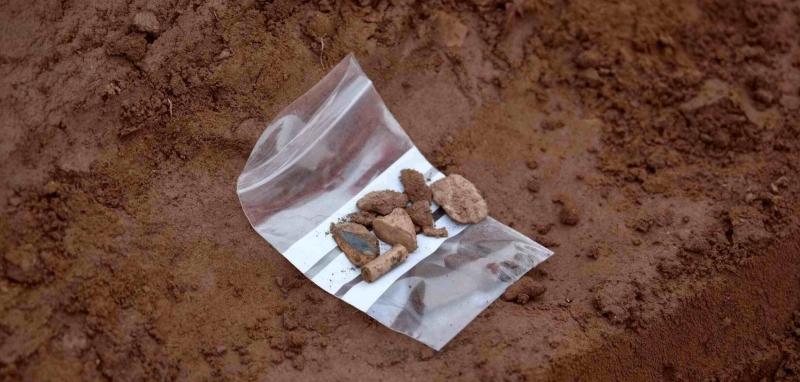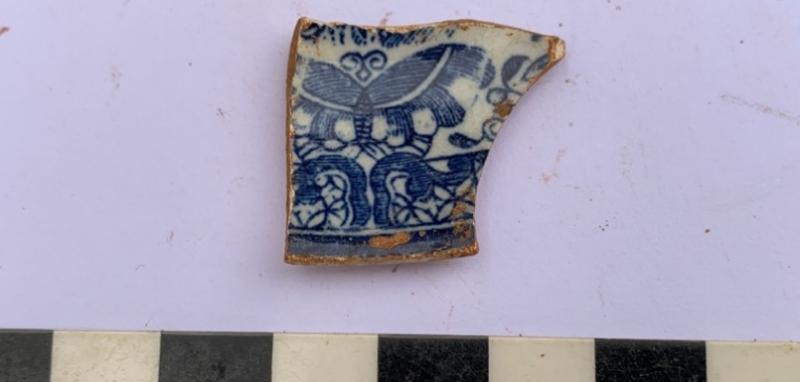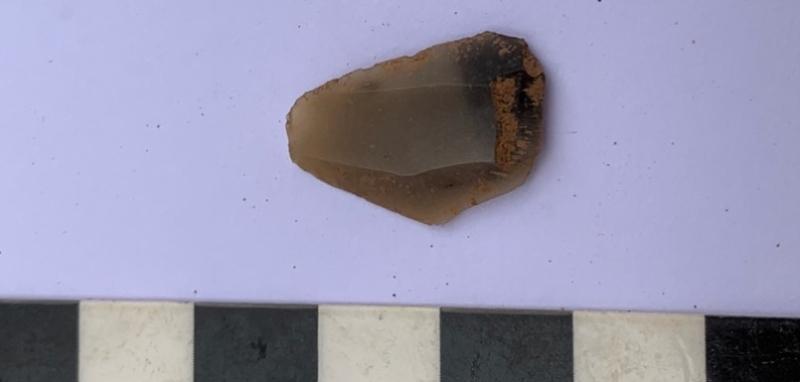Eastern Green Week 6: Artefacts part 1
The excavations at Eastern Green, south of the A45, Coventry, were carried out by L – P : Archaeology (now part of MOLA) on behalf of Orion Heritage and Hallam Land Management. You can read more about the site and the progress of the excavations through these weekly update blogs
Over the next two blog posts, we will be taking a look at some of the artefacts we have found on site. This is mostly pottery and ceramic building materials, but for archaeologists, these are interesting and often very useful finds, as we can date them. Based on the different materials used, we can also learn a lot about the status of the site, and what people were doing here. Make sure you keep reading to the end of the blog for a nice non-pottery find!
In this post, we will look at some of the artefacts we have found outside of their original context. The site at Eastern Green has been heavily used as agricultural land over the centuries. Ploughing of the fields means that material discarded or dropped at the site has been mixed together in the topsoil, and this even includes some Roman pottery.

Our finds experts will be able to date this pottery. But as they were found in the topsoil, all of these artefacts are out of their original contexts. This means we are not able to use them to date the part of the site they were found in. However, they are still evidence of people living and working on this land and we carefully collect each artefact.

Sometimes when you are starting out in archaeology, you might end up picking up more than one nicely shaped stone which looks very convincingly like an artefact (and vice versa) - don't be afraid to show it to someone to check, it's all part of the learning process!
Artefacts such as potsherds and other ceramics are stored in finds bags. These include a tag with information such as the context number, so we know exactly where they came from on site. These bags have holes, which stop them from becoming wet inside and damaging the artefacts. We don't clean the pottery before we put it in the bags, because this can damage it. Some pottery is friable, meaning it could crumble very easily, and needs to be dried out fully before it can be carefully cleaned. There is a lot of guidance around the storing and conserving of different types of artefacts.

Some of the more "modern" artefacts we have found in the topsoil on site include small sherds of 19th century pottery, such as this lovely willow pattern butterfly/moth.

We have also found a lot of pieces of clay pipe. These pipes were everywhere in England from the 16th century until they fell out of use in the early 20th century, with cigarettes taking their place. Archaeologists excavating in cemeteries have even found individuals with circular grooves in their teeth where they held the clay pipes in their mouths for much of their lives, especially whilst at work in the fields. The stems of the pipes are not very helpful for helping to date a site, but the bowls of the pipes are, as they were often stamped by the makers and some were quite beautifully decorated.

Last week we found a rather nice piece of worked flint. It is very small and could have had a variety of uses, including cleaning animal hides - it is still rather sharp and fits nicely between your fingers! We don't know exactly how old this worked flint is. It was found in a part of the site that was disturbed at some point in the past by people robbing stones from the Roman walls, which means like our pottery finds from the topsoil it is sadly not in its original context.

Which is your favourite artefact from this week's blog? I'm torn between the flint and the willow pattern butterfly! Come back for more pottery next week when we will take a closer look at some more artefacts.